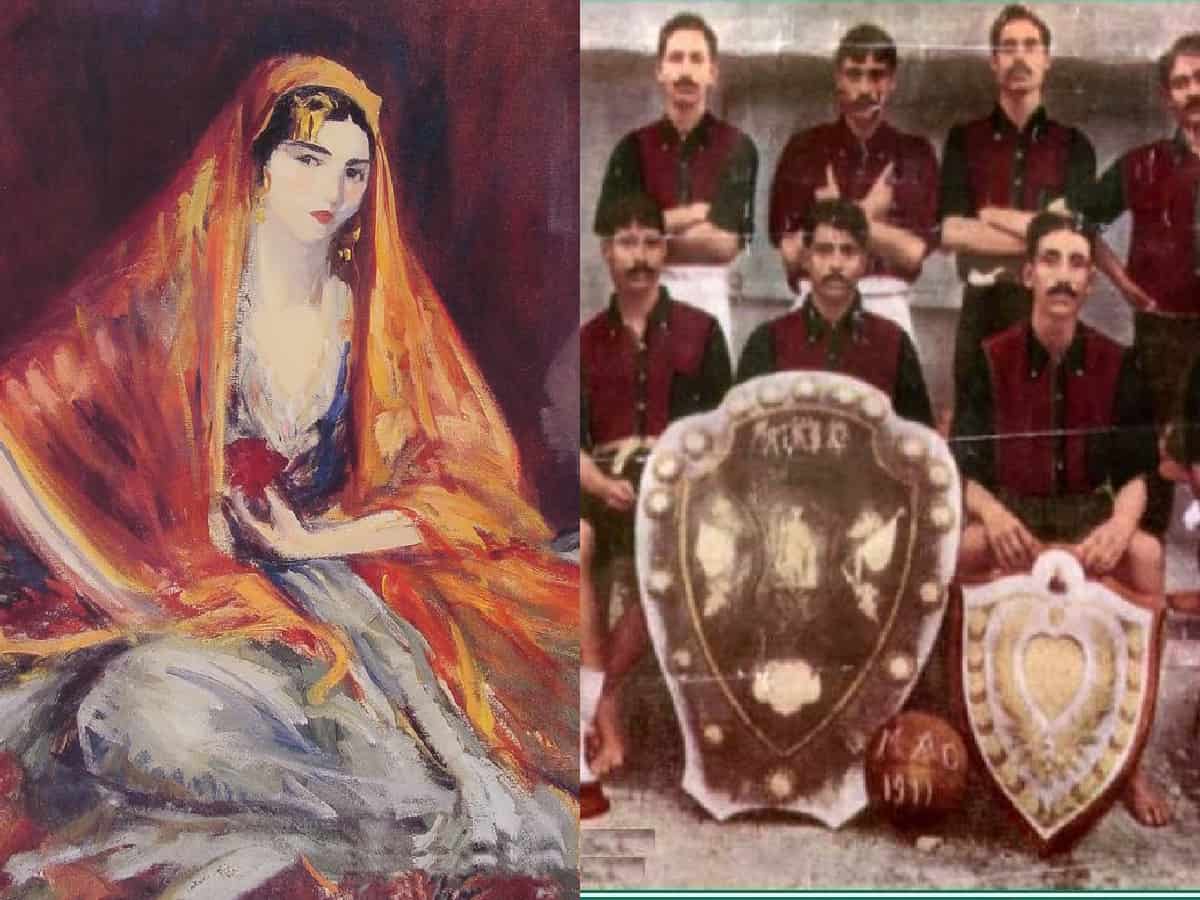
There have been many unusual incidents and strange facts in Indian sports which have been lost in the mists of history. The passing of the years have relegated these events to the background and the present generation knows little about these occurrences. For example there is a connection between cricket in India and the name of Princess Roshanara Begum, daughter of Emperor Shah Jahan.
The royal lady was a multi-talented woman who supported her brother Aurangzeb during his rise to power. After Aurangzeb’s accession to the throne in 1658, Roshanara was given the title of Paadshah Begum and became a powerful political figure. During her lifetime she created a garden in Delhi which is known as the Roshanara Bagh. It is one of the biggest gardens in Delhi and sees the visit of migratory birds in winter. In 1922, within the premises of this garden, was created the posh and prestigious Roshanara Club named after the former princess.
It was in this club that the founders of the BCCI such as the Maharaja of Patiala Bhupinder Singh, R.E. Grant Govan, Anthony De Mello and delegates from Delhi, Rajasthan and Mumbai used to meet to plan the formation of the BCCI. The august body eventually came into existence in December 1928. The headquarters of BCCI is now located in Mumbai but it was at this club, named after Princess Roshanara Begum, that the idea of BCCI germinated and blossomed.
The club also has a well laid out cricket museum and famous players like Sir Jack Hobbs and celebrities including Lord Mountbatten and actor Richard Attenborough have often visited the premises.
During the British Raj, the contests on the sports fields and the struggle for independence often became intertwined. One strange story concerns an English cricketer, Stanley Jackson who became captain of England and ensured victory in The Ashes series against Australia in 1905.
Attempt on cricketer Jackson’s life

Earlier Jackson had played for Cambridge University and helped Ranjitsinhji when the Indian ace was struggling to get selected in the University team. During his lifetime, Jackson became a volunteer soldier in the second Boer War and rose to become a Lieutenant Colonel. He then entered politics and came to India where he was appointed Governor of Bengal in 1927.
In 1932 while attending the convocation of Calcutta University he escaped an assassination attempt. A female student Bina Das fired five shots at him from close range. Amazingly he managed to avoid all five bullets by moving quickly. After the student had been captured he continued with his speech as if nothing untoward had happened. Till today he remains the only captain of England’s cricket team who was fired upon by a would-be assassin.
The life of the student Bina Das ended tragically. She was a highly educated young woman from a reputed family. After the incident she was sentenced to nine years rigorous imprisonment. When she was released, she got married but her husband passed away early. She thereafter led a lonely life in Rishikesh and one day she was found dead by the roadside.
Mohun Bagan beat British Rifle Brigade

In 1911, India’s oldest football club Mohun Bagan AC (founded in 1889), which is now known as ATK Mohun Bagan, created history by becoming the first Indian team to win the prestigious IFA Shield. The British organisers allowed only a select few Indian teams to take part. Mohun Bagan was given this honour from 1909. For the first two years the club struggled to find its footing against the strong British army teams.
But in 1911, Mohun Bagan defeated rival after rival as it progressed up the ladder. It beat the Rifle Brigade (an infantry unit of the British army) and the Middlesex Regiment to reach the final where its opponent was the East Yorkshire Regiment. By now all Indians were in the throes of great excitement. On the day of the final, people flocked to Calcutta (now Kolkata) to witness the contest. Supporters of Mohammedan Sporting stood in unison with the fans of Mohun Bagan. Boat loads of people from the eastern region of Bengal (now Bangladesh) crossed rivers and streams to reach the ground. They forgot their own traditional rivalry between east and west Bengal, Muslim and Hindu, as their hearts became united with one single desire – to vanquish the oppressive rulers.
But due to overcrowding, thousands of people could not enter the ground and had to wait outside. They were relying on the shouts of their compatriots inside to know what was happening on the ground. Then the people devised a unique method of conveying information not only to those outside but to all citizens of Calcutta. They decided to make kites of different colours fly in the air. A red kite would denote a British goal and a green kite would convey an Indian goal.
The pulsating match got underway and soon the British team went ahead. Their ace forward Sergeant Jackson hammered the ball into the Mohun Bagan goal and the huge crowd was shocked into complete silence. But they soon recovered their excitement and yelled themselves hoarse to encourage their own players. At last the Mohun Bagan captain Shivdas Bhaduri foxed the British defence and scored a goal. The score was now 1-1. Then in the final minutes, the tall and handsome striker Abhilash Ghosh fired in the all important second goal to give Mohun Bagan a victory.
Immediately the whole city erupted in uncontrolled joy. The sky was awash with colour as kites flew from all rooftops of Calcutta to herald the triumph of an Indian team for the first time. Thus in the days before cell phones, the people devised a unique method of communication by using paper kites to convey the message of their pride and achievement.



